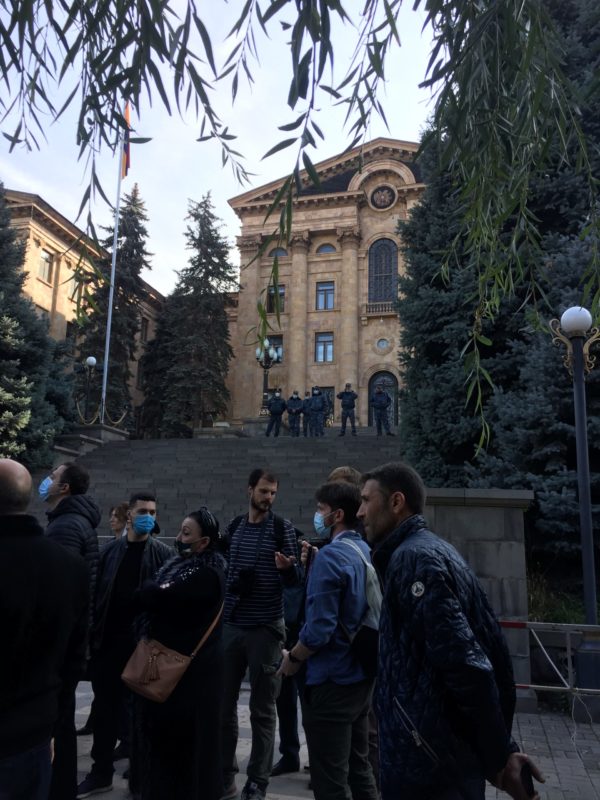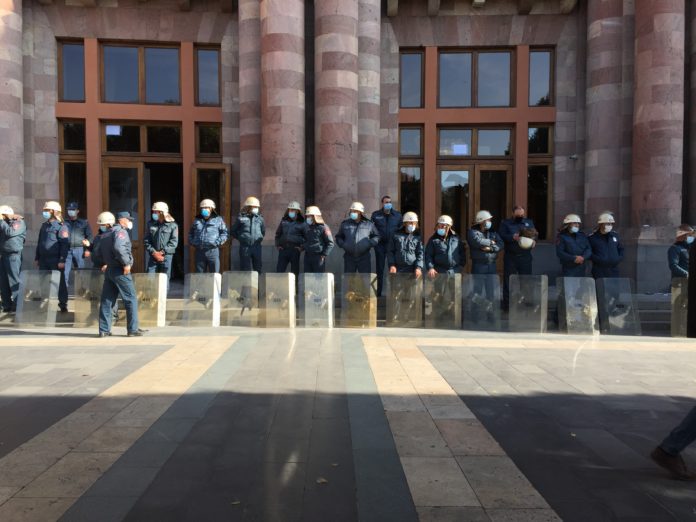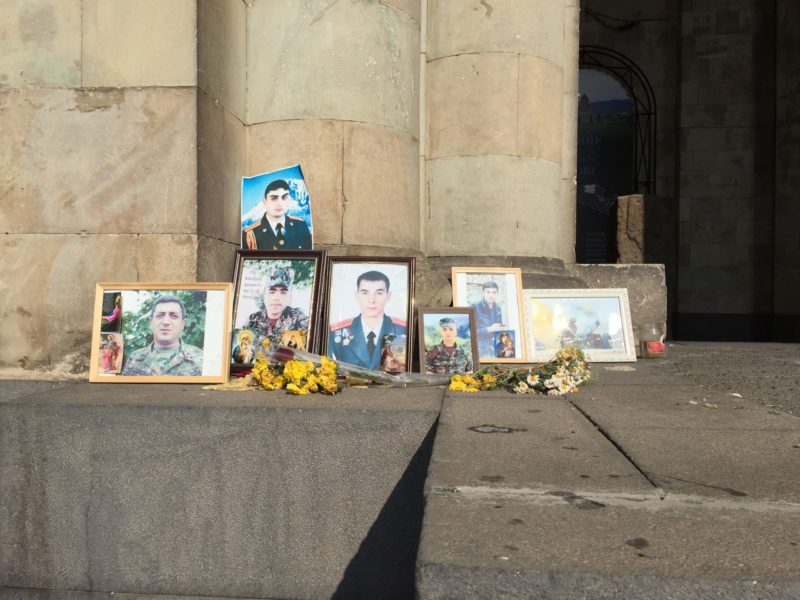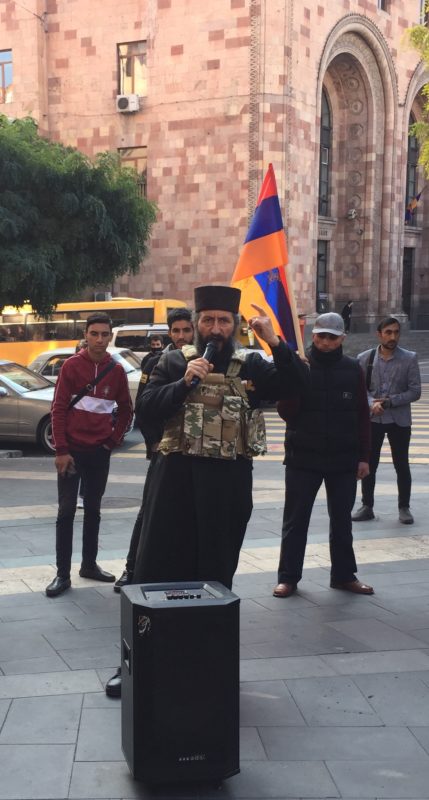YEREVAN – It was around 1:00 a.m. on November 10 that the people of Armenia were made aware of a shocking development: Prime Minister Nikol Pashinyan agreed to a Moscow-brokered truce effectively surrendering the bulk of the provinces that once made up the Republic of Artsakh.
Though the war’s prognosis had grown increasingly bleak on the Armenian side, this development nevertheless came as a great shock to many Armenians. In the days leading up to Armenia’s surrender, the atmosphere of confidence in Yerevan was hard to miss. Large billboards and digital signs proudly bore patriotic slogans (“We will win!”, “I continue working so we may win”), and scores of people on the homefront, ranging from Artsakh refugees to Yerevan locals, expressed confidence that the Armenians could still snatch victory from the jaws of defeat.

In the immediate aftermath of this morale-shattering announcement, scores of protestors stormed government buildings in the early hours of Tuesday morning, with some even managing to steal private property from Pashinyan’s own residence.

Armenia’s House of Government, located on Republic Square, was heavily vandalized and its front entryways were significantly damaged by rioting. In the wake of an upswell in outrage and fury, Armenia’s opposition parties have taken this opportunity to launch an all-out offensive against Pashinyan’s government.
Parliament
Since morning scores of demonstrators have congregated on the grounds of the parliament. Despite a heavy police presence and the generally agitated nature of the crowds, the demonstrators have been largely non-violent, limiting themselves to animated arguments with fellow demonstrators, and the occasional shoving.













